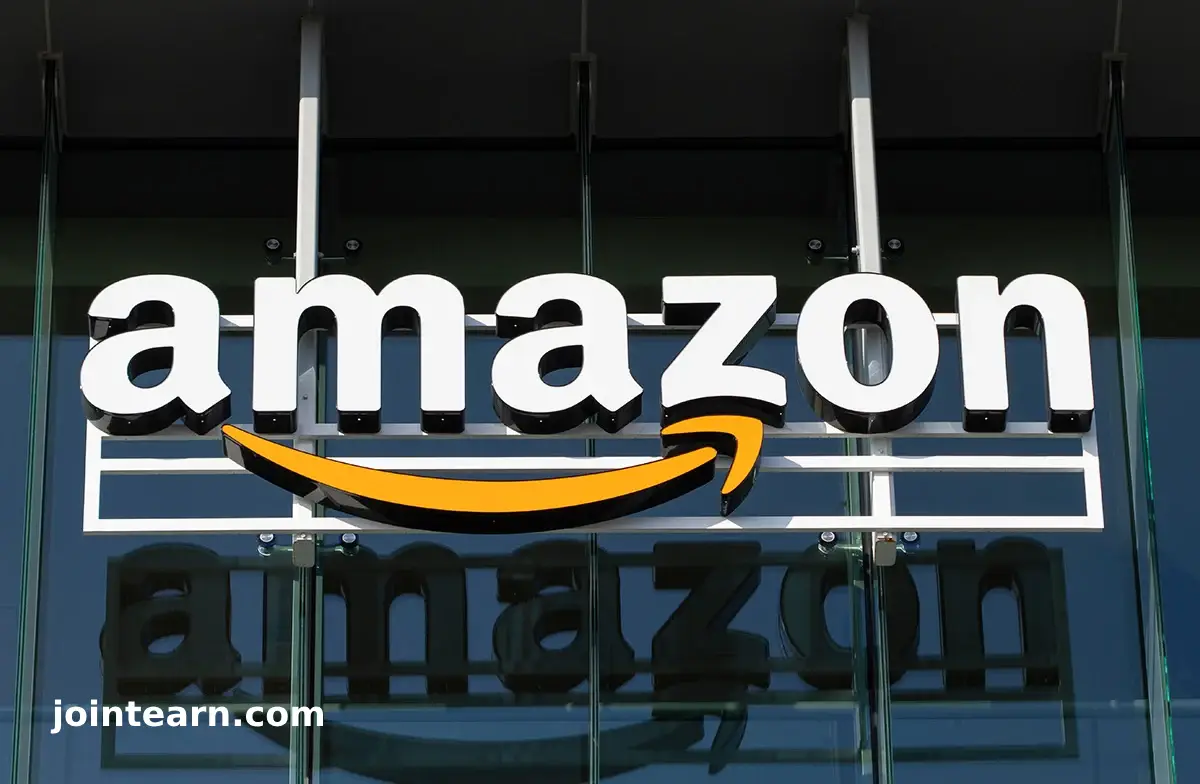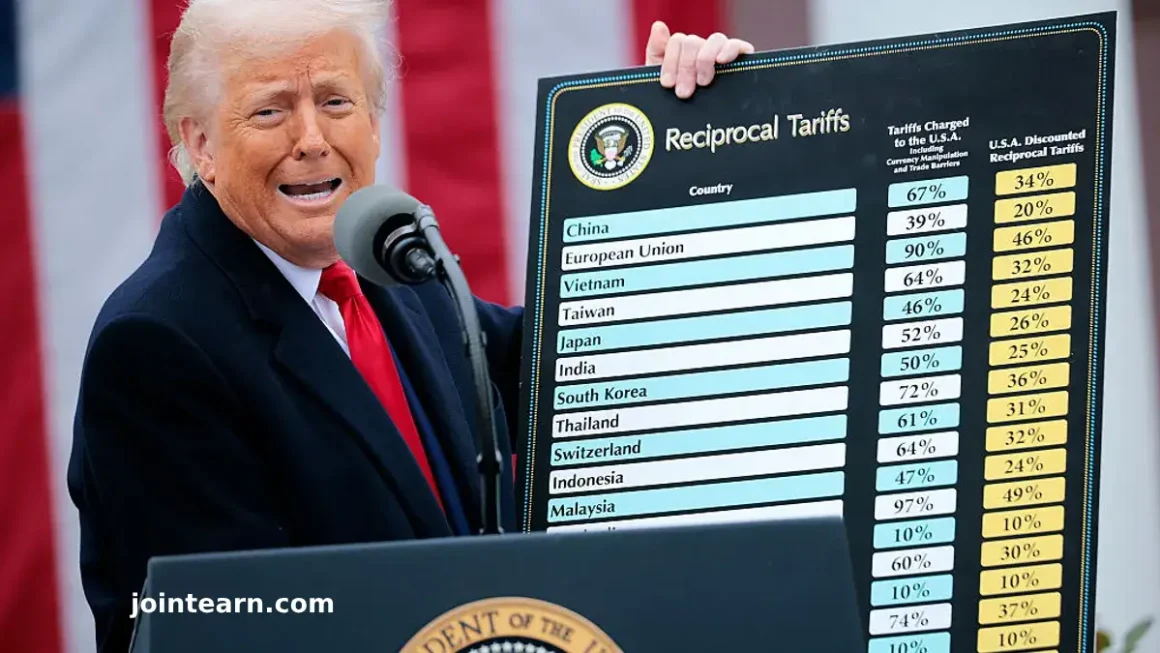Amazon.com Inc. (NASDAQ: AMZN), the world’s leading online retailer, has announced a more cautious outlook for the coming months due to concerns over the negative impact of US tariffs on its business. In its most recent earnings report, Amazon expressed concerns that rising tariffs and global economic instability could slow down consumer spending, affecting both its core eCommerce business and third-party seller services. As Amazon braces for potential economic turbulence, analysts are questioning how the company will manage the increased costs of imports, especially from its Chinese suppliers.
Amazon Faces Pressure from Tariffs and Economic Uncertainty
On Thursday, Amazon reported strong first-quarter earnings but provided a weaker-than-expected forecast for the upcoming quarter. The company projected operating income of $13 billion to $17.5 billion, significantly lower than the average analyst estimate of $17.8 billion. In addition, Amazon’s sales forecast for the second quarter was revised down to between $159 billion and $164 billion, just below the consensus estimate of $161.4 billion.
In its statement, Amazon acknowledged that its financial outlook could be significantly impacted by several macroeconomic factors, including ongoing tariff and trade policy shifts, fluctuations in currency exchange rates, and potential recessionary risks. This marks a change from Amazon’s February forecast, which did not mention tariffs as a key concern.
Amazon CEO Andy Jassy addressed the uncertainty, stating that the company could not predict exactly how tariffs would evolve but noted that, so far, consumer demand had not softened dramatically. However, there are signs that consumers may be adjusting their buying behavior, with increased purchases in certain categories as shoppers prepare for possible price hikes related to tariffs.
Q1 2025 Results Show Growth, but Challenges Lie Ahead
For the first quarter of 2025, Amazon reported revenue growth of 9%, reaching $155.7 billion, just above analysts’ expectations of $155.2 billion. Operating income for the period totaled $18.4 billion, exceeding analysts’ forecast of $17.5 billion. Despite these positive results, Amazon highlighted that its sales growth could be slower in the upcoming months as external pressures weigh on consumer sentiment.
While Amazon has built a reputation for offering competitive prices, its dependency on Chinese suppliers may expose the company to greater risk as tariffs on Chinese imports continue to rise. Independent third-party sellers, many of whom source goods from China, may face increased challenges in keeping prices low for Amazon customers. This could impact Amazon’s high-margin advertising and logistics businesses, both of which rely heavily on third-party sellers to drive growth.
Third-Party Seller Services and Advertising Underperforming
Amazon’s third-party seller services revenue, which includes fees and commissions from independent sellers using Amazon’s marketplace, rose by just 6% in Q1, totaling $36.5 billion—below analysts’ expectations. This slowdown reflects the strain on smaller sellers who are facing increased costs due to tariffs. Additionally, Amazon’s advertising revenue, a critical growth area, grew by 18% to $13.9 billion, meeting analysts’ forecasts but showing signs of slowing compared to previous quarters.
Sky Canaves, an analyst at eMarketer, stated, “Amazon’s advertising business remains vulnerable to cuts in spending from small and medium-sized sellers who are feeling the pinch of tariffs on Chinese imports. Additionally, growth in Amazon’s third-party marketplace has slowed significantly from the robust growth seen just a few quarters ago.”
Amazon Web Services (AWS) Growth Slows Amid Increased Competition
Amazon Web Services (AWS), the company’s cloud computing division, reported revenue growth of 17% to $29.3 billion in Q1. While this growth met analysts’ expectations, it marked the slowest increase in AWS’s growth rate in over a year. The cloud sector is facing increased competition, particularly from Microsoft Azure, which reported stronger-than-expected results, indicating that demand for cloud services is holding steady despite the economic pressures.
Gil Luria, an analyst with DA Davidson & Co., noted that while AWS’s results were in line with expectations, Amazon investors might be disappointed by slower margin growth. The analyst also pointed out that Microsoft’s Azure business grew almost twice as fast, further intensifying the competitive landscape for Amazon in the cloud sector.
Impact of Tariffs on Amazon’s Pricing and Customer Experience
In response to mounting pressure from tariffs, Amazon is considering changes to its pricing strategy. Earlier this week, the White House criticized Amazon for contemplating a plan to disclose the tariff costs for goods sold on its marketplace. The company, however, clarified that while it was exploring the possibility of showing tariff-related costs to customers, it had no immediate plans to implement such a policy.
Amazon’s Chief Financial Officer, Brian Olsavsky, emphasized that the company is preparing for a variety of outcomes regarding trade and the overall economy. He assured investors that Amazon is taking proactive steps to maintain its customer-centric approach, with an ongoing commitment to keeping prices low while managing its costs effectively.
Amazon Stock Declines Amid Market Concerns Over Tariffs
Following the earnings report, Amazon’s stock price fell by approximately 2% in premarket trading. Shares have dropped by about 13% so far in 2025 as Wall Street grapples with the potential long-term impact of tariffs on Amazon’s retail operations. The company’s heavy reliance on Chinese suppliers and third-party sellers has raised concerns that the rising costs of imports could erode Amazon’s profitability.
Looking Ahead: Will Amazon Weather the Storm?
As Amazon navigates these turbulent times, investors and analysts will be closely monitoring how the company adapts to the shifting economic landscape. With consumer demand potentially slowing due to higher prices, and with tariffs continuing to affect its supply chain, Amazon will need to find innovative ways to protect its margins while continuing to meet customer expectations for low prices and fast delivery.
Despite these challenges, Amazon’s vast network of suppliers and its dominant position in both the eCommerce and cloud computing sectors should provide some insulation against the worst effects of tariff-induced inflation. As the company continues to adapt, it will be crucial to track how its major business units—including third-party services, advertising, and AWS—perform in the coming months.












